How to make the most of 48 hours in Valletta, Malta
The warm tones of Malta's imposing walled capital Valletta* have long drawn people through the city gate and into its grid of narrow, steep, often stepped streets, where shiny, slippery paving slabs hint at the centuries of footsteps that have gone before.

At fewer than 0.3 square miles in size, Valletta, a UNESCO World Heritage Site, may be the smallest capital in the EU but it's also one of the world's most concentrated in terms of historic monuments.
Europe's southernmost capital city was founded in 1566 by Grand Master Jean Parisot de Valette of the Knights of the Order of St John and named after him in honour of his instrumental role in defending the island during the 1565 Great Ottoman Siege.
Constructed across the rolling Sciberras Peninsula between the Grand Harbour to the south and the Marsamxett Harbour to the north, Valletta was a strategic no-brainer and became the island's capital in 1571. Although much of the original architecture was lost during, or rebuilt following, WWII, it retains plenty of Baroque flourishes.
Today, Valletta's present rests inescapably on its past, yet, for a place oozing historic intrigue, this small city also promises innovative experiences, trendy coffee stops and a host of activities that will prevent you from straying too far. Find out how to make the most of a short break to this captivating city in miniature below.
Getting there: browse and book great value escapes with easyJet holidays*, which offers breaks to Valletta and elsewhere in Malta* from the UK all year round.
Day one
10.00 am: Delve into Valletta's history
Before Valletta, there was Fort St Elmo. Constructed in 1552 following repeated threats of Ottoman attacks, it held a vantage point over the entrance to both harbours at the nose of the Sciberras Peninsula.
A star fort divided into upper and lower sections, Fort St Elmo saw some of the fiercest fighting during the Great Siege of 1565 when the Ottomans ultimately failed to take the island. Tinkered with during the 17th century and further modified by the British in the 19th century, it was then heavily bombarded during WWII.
Malta gained independence from the British in 1964 and, in 1972, the British Army unit of the Royal Malta Artillery left the fort for the last time. It was then somewhat neglected and began to fall into disrepair.
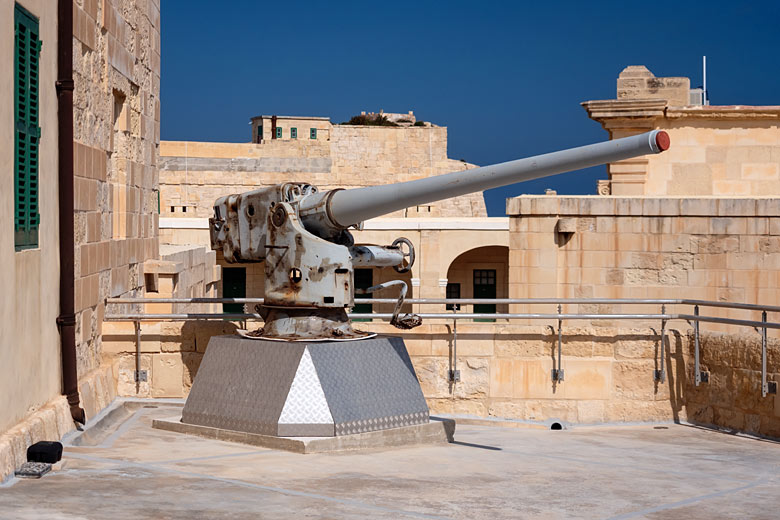
In 2009, a major restoration of the fort began. Now, the walls of this limestone giant house the fascinating National War Museum, which charts Malta's story across seven different galleries from prehistoric times through the Knights Hospitaller, Ottoman and Napoleonic invasions, British rule and WWII.
Walk the bastions and casemates while soaking in the views from all sides. Just be prepared for the air raid siren, an original WWII relic, that blares rather abruptly as a mark of respect at noon each day.
12.30 pm: Lunch at The Bagel Hole
Mind your head as you duck into the snug underground embrace of The Bagel Hole for a well-earned bite to eat post-immersion in Malta's history.
Here, the smell of freshly baked goodness wafts from the island's only New York-style bagelry and fillings such as 'The Veggie' with sundried tomato cream cheese, roasted butternut squash, aubergine spread and mint keep things interesting. You can, of course, order your own personal favourite.
2.00 pm: Pop to Sliema for a swim
Catch the 15-minute ferry across to Sliema where, a short walk east of the terminal, you'll find a roped-off swimming area much-loved by locals.
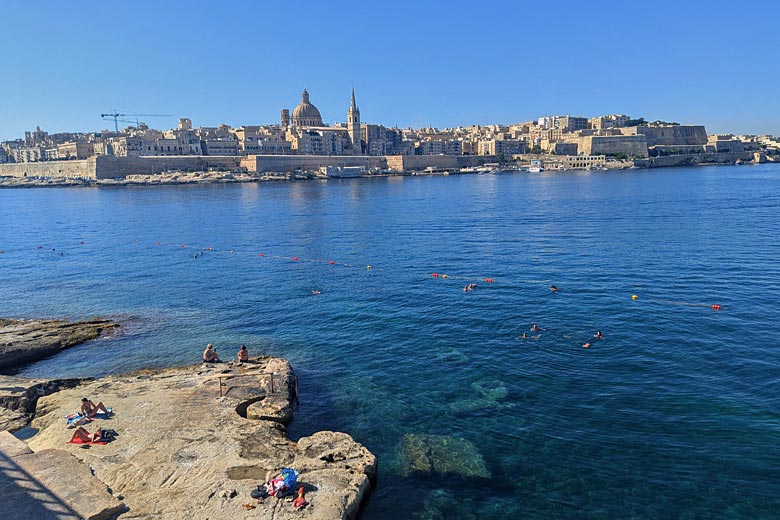
Free to use and delightfully easygoing, just take a towel, find your spot on the rocks and dive into the cooling clear water. Whether swimming lengths or simply floating in the salty swell, Valletta's low-lying, sandy-hued skyline, complete with the great dome of the Basilica of Our Lady of Mount Carmel, makes for a winning backdrop.
4.30 pm: Kayak the Grand Harbour
Swap swimming for paddling with a late afternoon kayaking session. Book your seat with MC Adventures, experts in all things outdoors across Malta, and you could be navigating the Grand Harbour before sunset, veering around ferries, fishing boats and traditional dgħajsa water taxis.

Traverse this magnificent historic waterway in the wake of an enthusiastic guide such as MC Adventure's Bogdan (aka Bob) to explore caves and rock tunnels inaccessible from land. Cruise beneath Fort St Elmo and the harbour's lighthouse all while enjoying a very different perspective of both Valletta and the Three Cities. Not to be missed.
7.00 pm: Pizza at SOTTO
Descend into basement SOTTO Pinsa Romana, where a well-stocked bar, exposed brick walls, friendly staff and an unpretentious vibe combine effortlessly.
Determined to bring a little of the Italian capital to the Malteste one, SOTTO serves pizza Roman-style, with bases made of four different types of flour left to raise for 72 hours before being hand-stretched and wood-fired. Lots of options but the parmigiana takes some beating.
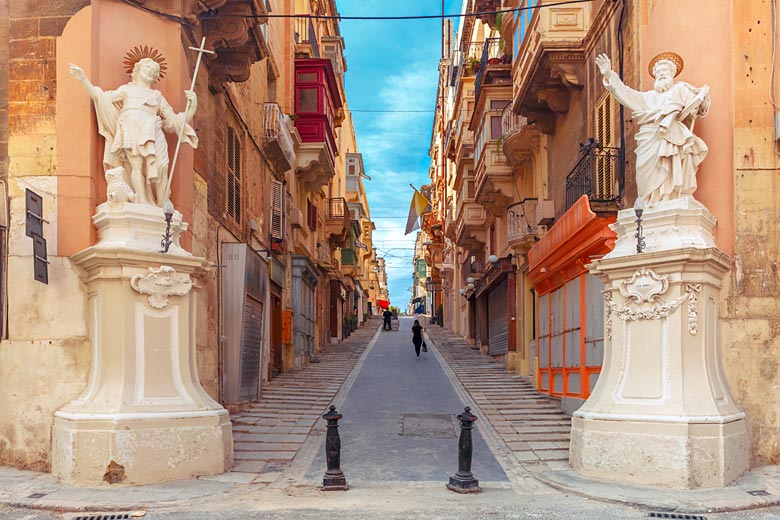
Day two
10.00 am: Go underground
Pick your way among the outdoor seating on a café's terrace to the inconspicuous entrance of Underground Valletta. After a brief introduction from your guide, and suitably clad in hairnets, helmets and head torches, your group will venture down into the network of tunnels that trace Valletta's streets beneath the surface.
Originally built in the 16th century as a strategic defensive tool to help funnel soldiers and store grain and water, the tunnels were expanded in the 1940s, becoming a functioning underground city of sorts, into which Valletta's population moved during the aerial bombardments.
Reopened in 2022, Underground Valletta walks you through the 'streets' and past where people lived for virtually years during WWII. It's a dark, damp world where inhabitants had access to running water but rarely electricity and no toilets.
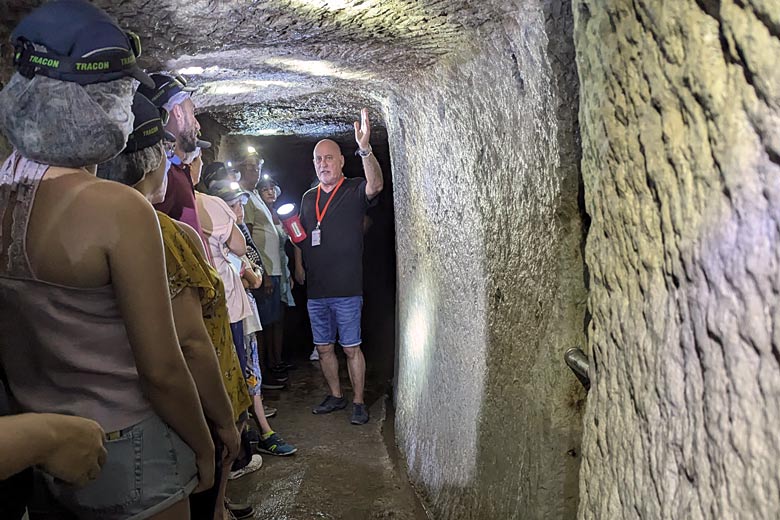
Look out for the moving ways in which people decorated their 'homes' with tiles from nearby bombed houses and the whopping great medieval reservoir.
Please note: tours last for one hour and only run on Mondays, Wednesdays and Sundays. Advanced booking essential.
11.15 am: Coffee at LOT61
Slide into narrow LOT61 and you'll find a devout coffee shop, which is very much more than just good looks. Passionate coffee roasters from the beginning, LOT61 is the place for a professionally-brewed caffeine hit. Feeling the heat? Opt for an iced version, while a flaky pain au chocolat is actively encouraged.
1.00 pm: Cruise to the Three Cities
Hop aboard the ferry that glides across the Grand Harbour to the Three Cities in around 10 minutes. There's so much to see and do in the more-like-neighbourhoods of Vittoriosa, Senglea and Cospicua, from museums to palaces.
Although currently undergoing restoration works, the Maritime Museum on Vittoriosa is a must-stop given the archipelago's connection with the sea.
A small exhibition details this voyage, giving a flavour of the many artefacts that will be proudly displayed when it fully reopens. Purchase a combo ticket and you will also gain access to Fort St Angelo, whose history is lively and roots long, dating from the 13th century.
A good way to get to grips with all three is from behind the wheel of an electric buggy on a self-drive tour led by a guide from Rolling Geeks.
Interesting, engaging and just a bit different, you'll wind past bright shutters and under balconies heavy with plants, pop out in hidden squares and visit the bastion-top Gardjola Gardens, among other sights.
4.30 pm: Experience The Brewhouse
A short bus ride from Valletta will take you straight to the door of The Brewhouse, the all-singing, all-dancing new-ish visitor experience from Farsons Brewery, home of Malta's unmissable Cisk beer.
Located in the brewery's original, rather striking five-storey 1950's building, The Brewhouse reopened in 2021 offering tours and tastings of the nation's beloved beer.
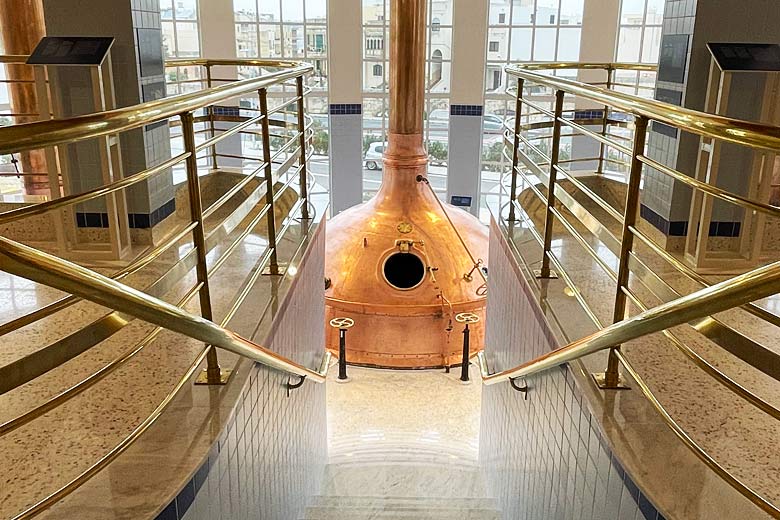
Journey through the beer's evolution, of which British influence played a vital part, to the post-war era while also learning about the four key ingredients and the brand's changing identity. The highlight, however, has to be sipping a cold pint in the The Cisk Tap rooftop bar.
7.00 pm: Wine, dine & tap your feet
Step inside the city's old market, Is-Suq tal-Belt, wrought ironwork and all, to find a contemporary food court with no fewer than 15 outlets offering everything from freshly made pasta and burgers to delicious poke bowls.
Aferwards, find a nightcap at nearby Babel where the friendly staff, live jazzy beats and colourful cocktails will have you swaying into the night.
Climate in Valletta
| Jan | Feb | Mar | Apr | May | Jun | Jul | Aug | Sep | Oct | Nov | Dec | |
|---|---|---|---|---|---|---|---|---|---|---|---|---|
| Maximum daytime temperature °C | ||||||||||||
| Hours of sunshine (daily) | ||||||||||||
| Days with some rainfall | ||||||||||||
| Sea temperature °C |
The above guide shows the climate in Valletta. Find out more about conditions across the archipelago in our complete guide to the climate in Malta.
Ready to explore Valletta? Search the latest online offers on escapes with easyJet holidays.
More about Valletta
- Overview
- Best time to visit
- Weather by month
- 5-day weather forecast
- Destinations
- Travel advice
- Deals & discounts
Valletta by month
Jan Feb Mar Apr May Jun Jul Aug Sep Oct Nov Dec
Explore holidays in the sun for less
- Beach holidays
- Family holidays
- City breaks
- Summer holidays
- Winter sun holidays
- Holiday offers
- Top travel brands
- Airlines & flights
- Discount hotels
- Airport parking deals
- TUI
- Jet2holidays
- easyJet holidays
- Love Holidays
- Black Friday sales
Airport parking
- Manchester Airport
- Stansted Airport
- Bristol Airport
- Luton Airport
- Birmingham Airport
- Edinburgh Airport
- Gatwick Airport
- Glasgow Airport
- Newcastle Airport
Airport lounges
- Manchester Airport
- Birmingham Airport
- Bristol Airport
- Edinburgh Airport
- Glasgow Airport
- Heathrow Airport
- Newcastle Airport
- Stansted Airport
- Gatwick Airport
Be inspired
Get your weekly fix of holiday inspiration from some of the world's best travel writers plus save on your next trip with the latest exclusive offers
We promise not to share your details






































